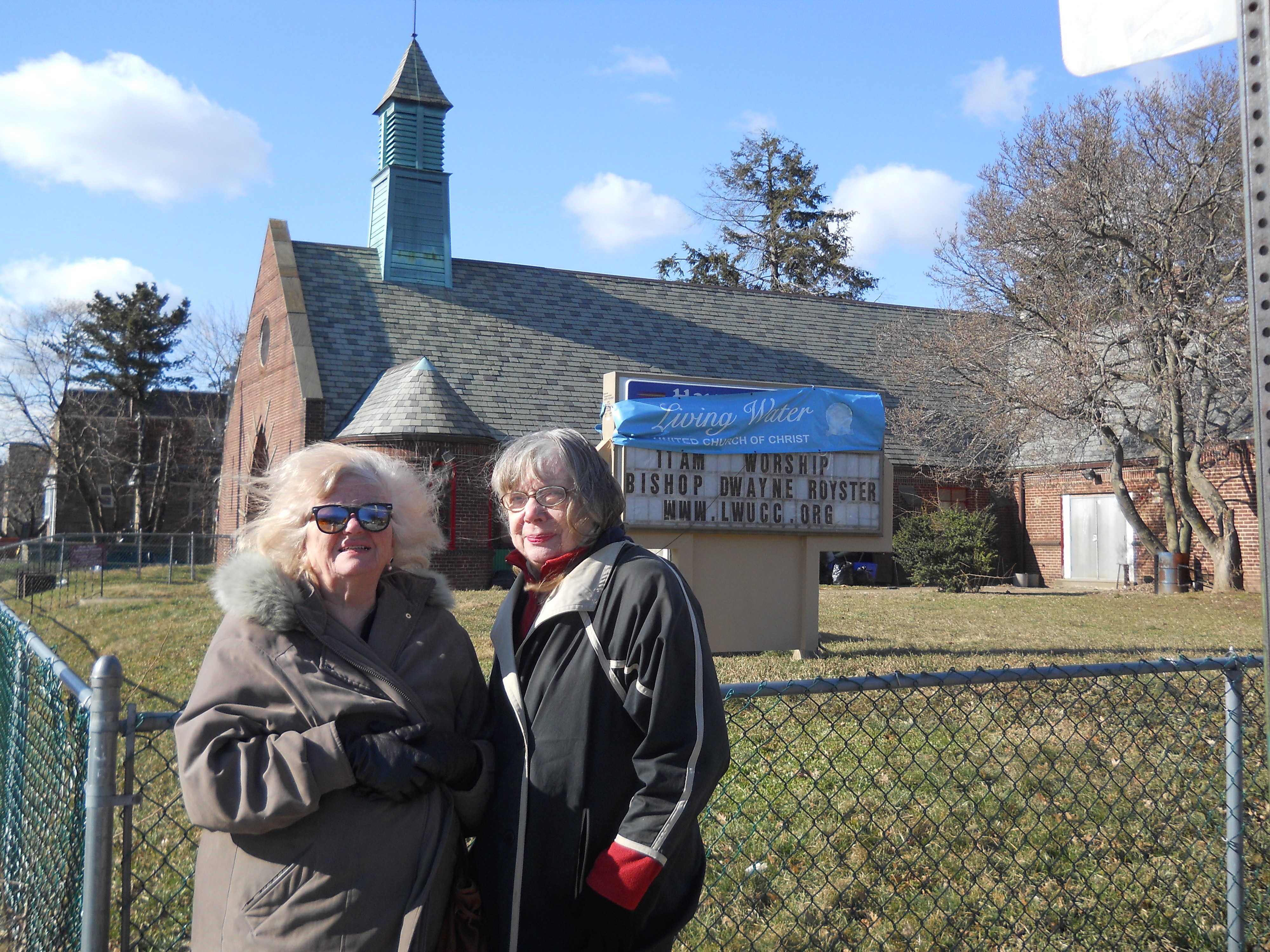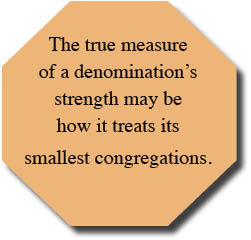
Anonymous Lutheran Addresses Redeemer Situation
I received an anonymous letter from a member of a SEPA congregation this week. The writer added a note that she was sending the letter to ELCA Presiding Bishop Hanson and several other church leaders including our local bishop.
She noted that she doubted letters make any difference. True, anonymous letters give the recipient an excuse to blow off any point the writer makes no matter how valid.
We understand the need for anonymity. We live in a Synod that is funding its ministry with seizures of property and lawsuits against laity.
Clergy have no room to criticize. Their universal silence on these issues is a form of anonymity.
We at Redeemer have written many signed letters almost all of which have been ignored. The single exception was the first letter we wrote to Bishop Hanson, probably early 2008. The Bishop glibly dismissed our very serious issues. Lots of God words, no God actions. His attitude trickles down to his staff and clergy. The ELCA legal offices, funded with parishioner offerings, responded to a Redeemer member’s letter with a note that they feel no obligation to get involved. Bishop Burkat has never responded to any of our letters. The people we pay to be there to make sure the congregations are protected spend our offerings protecting themselves.
We are going to reprint this anonymous letter because it has value. This writer took the time to understand the issues — something SEPA clergy, the Synod Council and Synod Assembly and the courts have failed to do. This writer nails the issues. Write on!
Here’s the letter (with minor spelling/grammar edits):
Dear Bishop Hanson,
I belong to Peace Lutheran Church in Bensalem, Pa., which is part of SEPA Synod. I recently attended a charity event in Philadelphia and met a woman from a church in Lansford, Pa. We got into a conversation about Redeemer Lutheran Church and Bishop Claire Burkat and how sad that their church was taken from them and how their valiant fight to regain their spiritual home was knocked down by the Pa Supreme Court, citing “church vs. state.” The woman I sat with told me that her church belongs to the Slovak-Zion Synod and that their Bishop (Rev. Wilma S. Kucharek) was investigated by the authorities for making improper withdrawals from a congregation’s accounts, causing the downfall of a church in New Jersey. She locked them out of their own church, like Burkat, and then sold their properties for a huge sum of money, forcing the congregation to now worship in a rented facility when they already had a mortgage-free church and parsonage of their own. She heard this from some people she knows that had attended a Synod Assembly cruise. Are you even aware of this in Chicago?
What kind of organization allows the taking of church properties that were built and paid for by the members of these congregations without any help from their synods. Just because you have hidden clauses in your constitutions that allow Synod Bishops to abscond with properties does NOT make it morally right. It is actually criminal to take by force another’s possessions for your own profit or gain. These clauses do not appear in the congregation’s constitution (I checked) but appear in the Synod’s constitution. How sneaky. Why didn’t you put this language in the congregations’ constitutions and spell it out more clearly so the average parishioner can understand the language? “That the Synod Bishop may close, at his/her discretion, the congregation’s church, seize their property, sell it, and then distribute the funds as he/she sees fit.” Wouldn’t that be more befitting to a religious organization to be honest and more forthcoming with the followers. You should also point out to the congregation to NOT come to you with their problems because you are an “interdependent” organization.
I am ashamed of how the ELCA has disgraced the Lutheran religion by ignoring Martin Luther’s principles of fair play for all. He would never condone abusing the weak by taking their possessions to further enhance one’s already lofty standing. Greed is a terrible sin. God knows who these bishops are. They can’t fool him with their empty prayers and their false justifications that they are doing this for the overall good of the Synod. These thefts of properties will be seen for what they are by the Lord.
Bishop Hanson, I’m sorry to say, the ELCA is now being run by bureaucrats and lawyers who don’t know what it’s like to honor the Lord by doing what is right in the Lord’s eyes and not the courts. There can be a happy medium but right now there isn’t. By the interdependent nature of the ELCA, you’ve divorced yourselves from your followers (the mass that supports the organization) by taking away their right to a fair an unbiased hearing regarding the closing of their churches. They can’t go to the courts because of the “separation between the church and state.” The Synod assemblies are a joke. The people who sit on these assemblies have no training in judicial matters in order to make proper judgments. They are just parishioners of local churches who volunteer to attend a yearly gathering and are clueless as to what’s going on. They are heavily influenced by the bishops, plus I don’t think that the bishops even need their approval to close a church.
It’s just so wrong that just one person can decide the fate of so many. At least the Catholics can go the Vatican Council in Rome where they have already overturned church closings in places like Cleveland, Ohio, by over-ruling local Bishops. The Lutherans have no such recourse.
Claire Burkat may have sued some members of Redeemer for standing up to her abuses, but she will not be able to sue me.
Signed, Disgusted
Here are a Few More Supporting Points
This writer describes the problems fairly accurately. The interdependent constitutions leave parishioners vulnerable to various self-serving interpretations, putting anyone who raises an issue at risk. Parishioners are the most vulnerable.
The writer also does not mention the founding Articles of Incorporation of ELCA Synods. These foundational documents forbid bishops from taking property and limit the power of the Synod Assembly. The writer is dead right that Synod Assemblies don’t know enough about church law to make decisions. Also, about a third of the Synod Assembly (the clergy) have a built-in bias. They owe their next call to their relationship with the bishop.
The clauses in the Synod constitutions have been altered over the years. The original model Synod Constitution calls for synodical administration to be temporary in nature and with the consent of the congregation. It was intended to help struggling congregations. Tweaks here and there presented to unsuspecting Synod Assemblies have reversed the intent of the constitution and violate the Articles of Incorporation—which was further compromised by Judge Lynn’s order regarding Redeemer, issued without hearing the case. Saint Paul knew what he was talking about when he advised church people to stay out of court!
Consequently, a clause intended to help congregations find their way through difficult times is now used to seize assets and help the synod through troubling times.
In Redeemer’s case, Redeemer appealed the issue of Synodical Administration to the Synod Assembly. The Synod Assembly never voted on the issue we appealed. Synod officials used our appeal to present a question allowing them to take our property (which we had not addressed in our appeal). Like lemmings the Synod Assembly voted on an entirely different issue—and an issue over which they have no constitutional authority. All SEPA Lutherans were victims of bait and switch.
Because of Synod Assemblies unquestioning decision, no Lutheran congregation really owns its own property anymore. A long-standing Lutheran tradition is gone. Your bishop needs only to make a claim on your property and your congregation is toast. There are no standards to be met. If Bishop Burkat needs your property to meet her budget (including her salary) she can claim it.
Back when Redeemer’s money was taken (1998) we were told the money would go to a Mission Fund. It was later reported that Mission Fund money is tapped by the Synod to fill deficits. When our Ambassadors visited Holy Spirit in NE Philadelphia, the week before they closed, their pastor explained that their money would go the the Bishop’s Discretionary Fund. At least that’s more transparent if not nobler. We suspect there is even less control over that fund than the misnamed Mission Fund.
We hope there are more letters written and we encourage you to sign them. Send them our way. As long as they are factually accurate, we will consider publishing them. At least you’ll know your letter has a chance of being read. Right now, the ELCA’s circular files are wide and deep!
The best people to put an end to the travesties of SEPA Synod are SEPA Lutherans. Ask your Synod Assembly to revisit the issues with Redeemer. We are still alive and well. We have grown a base of support during our years of exile and are ready to resume our ministry with our property— if SEPA Lutherans can ever manage to deal with the issues for which they have accepted responsibility.
It should be obvious to SEPA Lutherans that the sad story of Redeemer’s lack of viability was always a crock. Redeemer, even with many of its members in hiding, is stronger today than ever. We reach more people each week than any church in SEPA. We are positioned to restore our endowment to its 1990s high point—before SEPA cast its line over our waters (and they weren’t fishing for men).
There is more economic potential in open churches than in closed churches.





